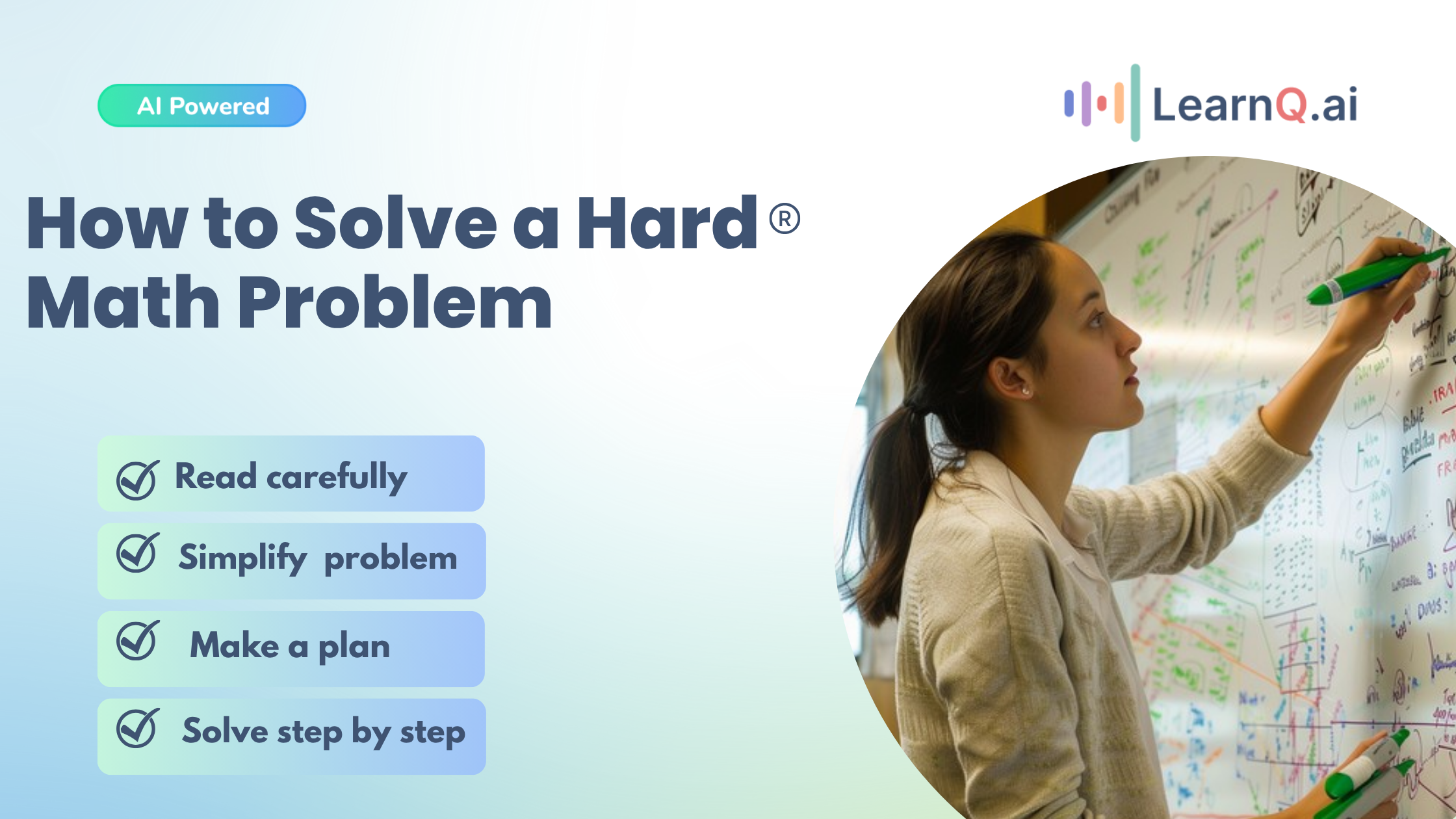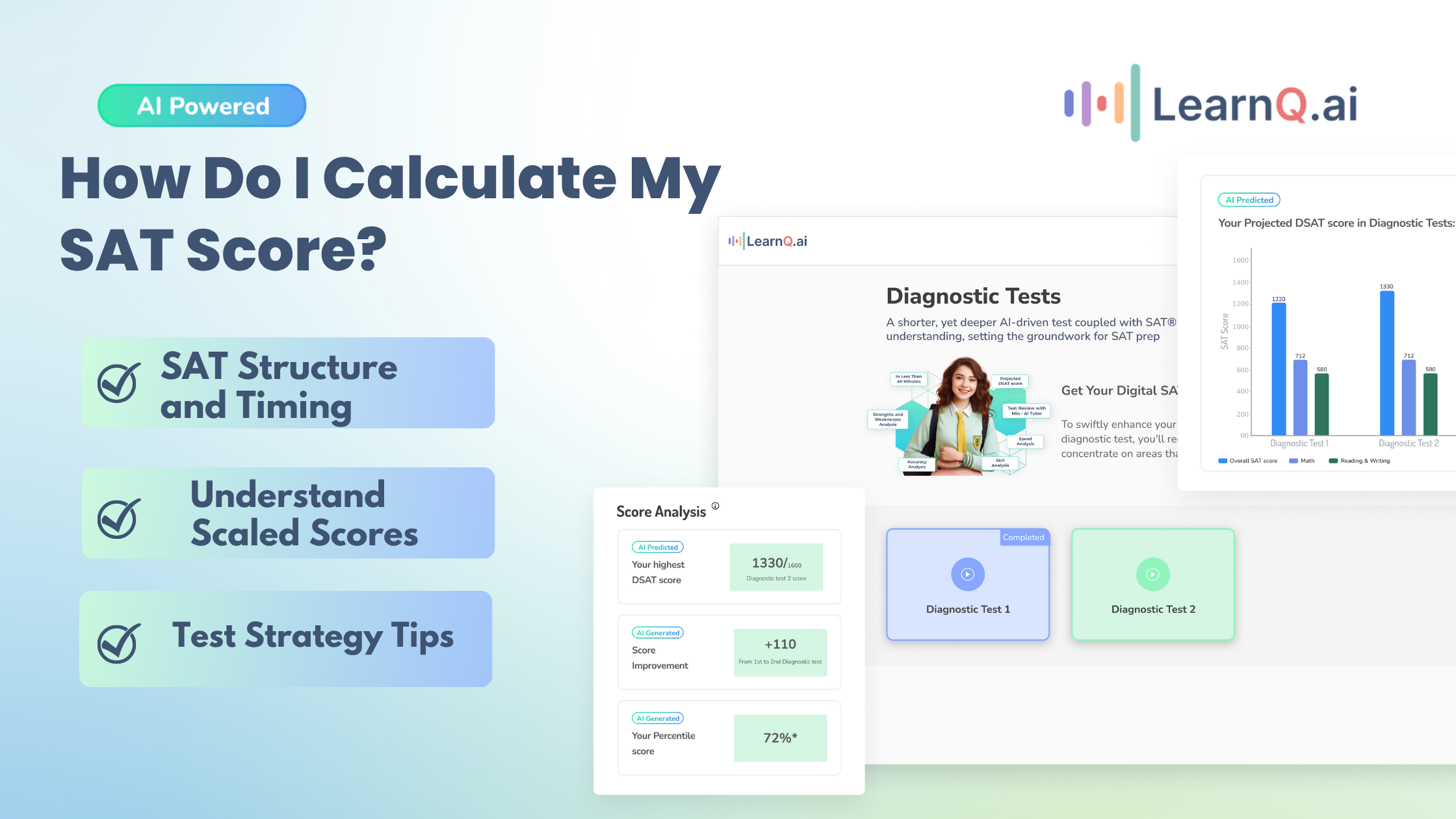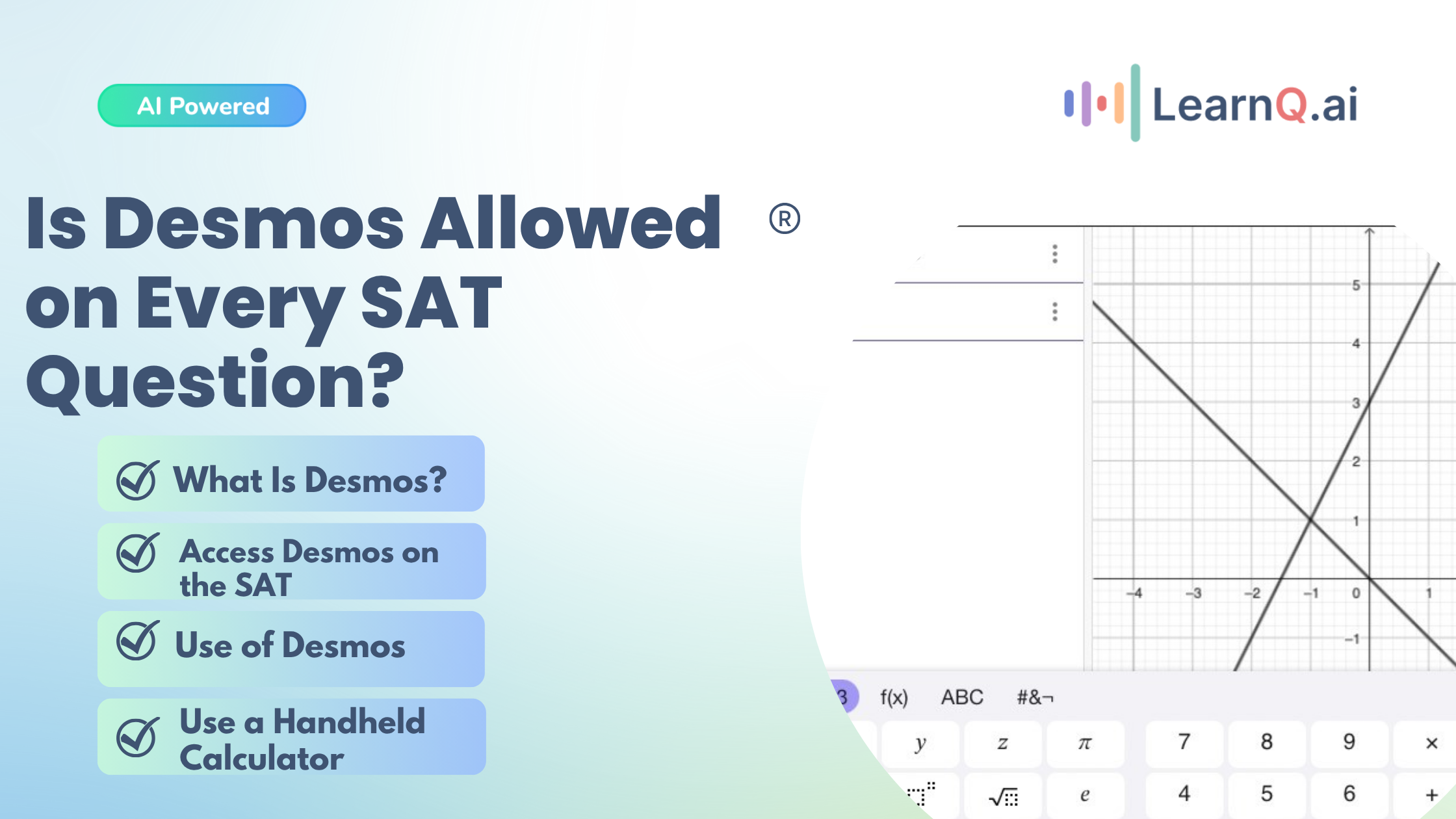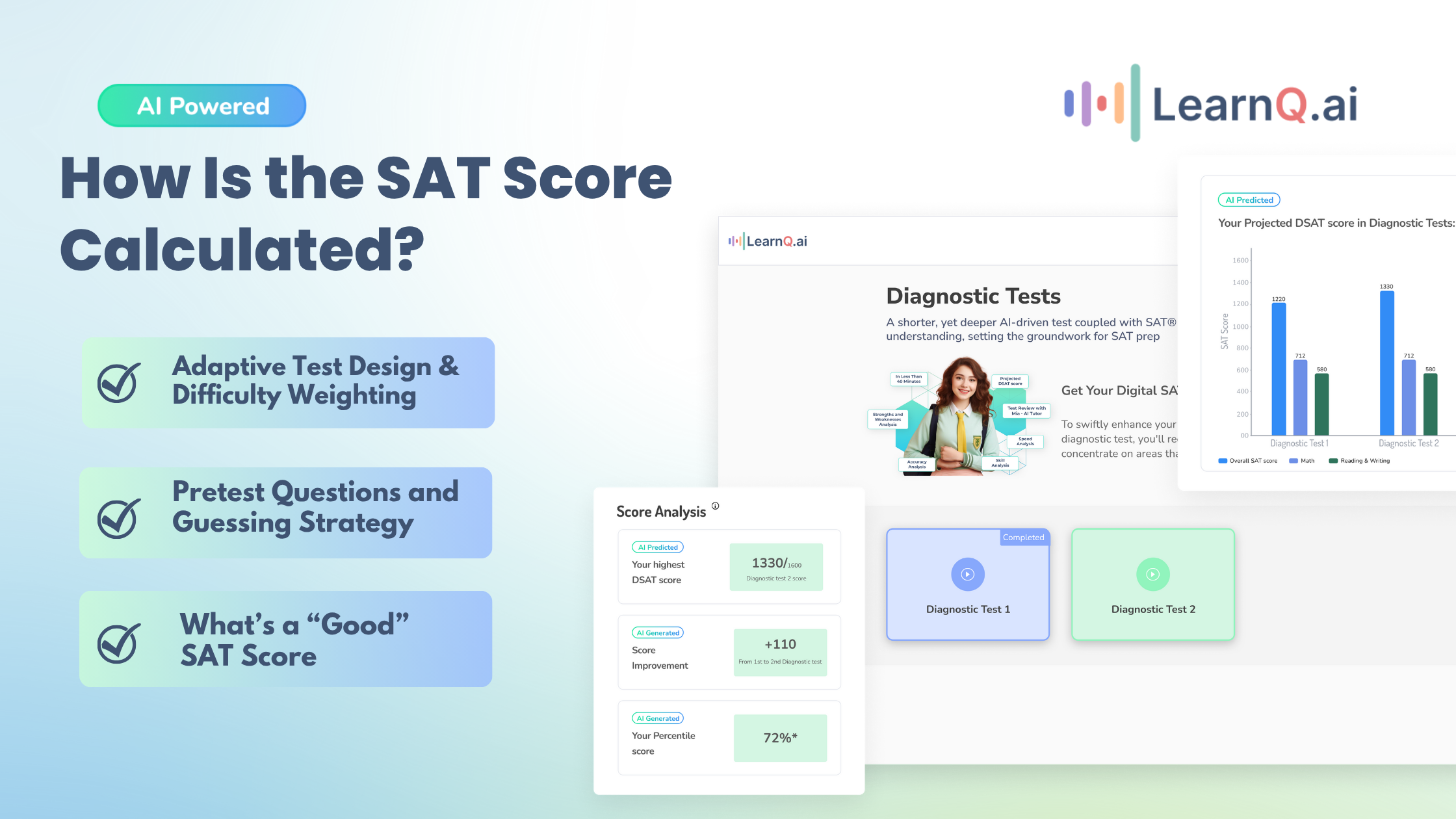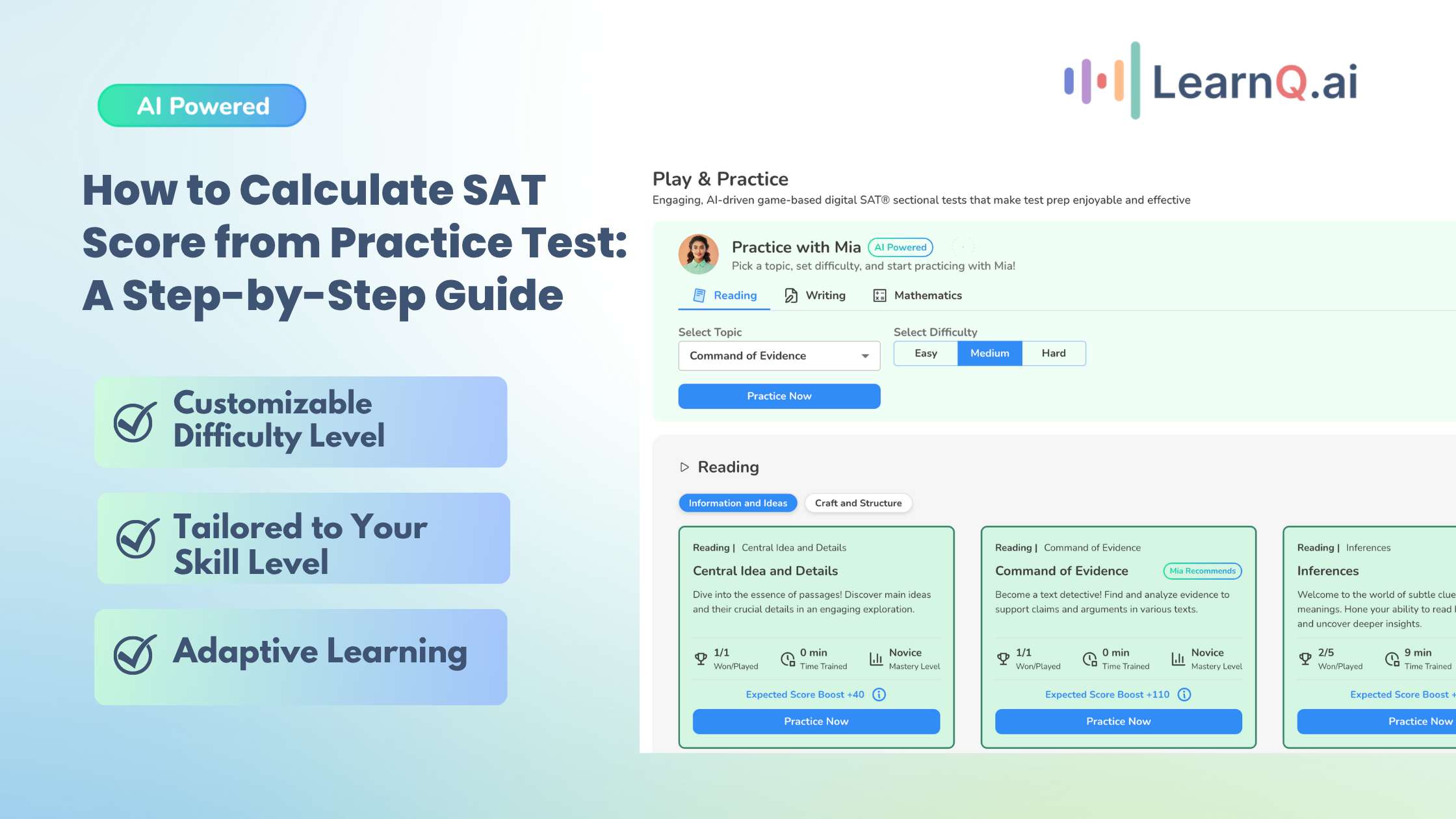The journey to achieving a high score on the Digital SAT can be challenging, especially when it comes to the math section. The toughest questions often leave even the most prepared students stumped.
However, understanding and mastering these difficult questions is crucial for effective preparation and success on test day.
Acknowledging the Challenge
The Digital SAT math section is known for its complexity, with some questions designed to test the limits of your problem-solving skills. These challenging questions require a deep understanding of mathematical concepts and the ability to apply them in various contexts. It’s common to feel overwhelmed, but recognizing the difficulty is the first step in overcoming it.
Purpose of Compiling a List of Hard Questions
Preparing for the Digital SAT Math section requires targeted practice, especially on the most challenging questions. This list of 10 hard math questions aims to provide you with focused preparation to enhance your problem-solving skills and overall performance.
Below, we have highlighted some important pointers about why we need to compile a list of 10 hard math questions.
- Identify Weaknesses: Pinpoint specific areas where you need improvement.
- Improve Problem-Solving Strategies: Develop and refine strategies for tackling complex problems.
- Build Confidence: Gain confidence in your ability to handle the toughest questions on the test.
- Enhance Preparedness: Ensure you are well-prepared for the variety of challenges you will face on the actual exam.
LearnQ.ai is Powered by VEGA AI—Is your Institute Next?
Give students a Duolingo-style test-prep platform with Shopify-level customization for tutors and institutes.
Understanding Digital SAT Math
Navigating the Digital SAT Math section requires a solid understanding of its structure, the types of questions you’ll encounter, and the key topics covered.
Let’s break down these components to help you prepare effectively.
Overview of the Digital SAT Math Section Structure
The Digital SAT Math section is designed to assess your mathematical skills and problem-solving abilities. Unlike the traditional paper-based test, the digital format allows the use of the Desmos calculator throughout the entire section. This consistent access to a calculator helps you efficiently tackle complex problems and focus on understanding and applying mathematical concepts.
The section includes two types of questions:
- Multiple Choice Questions: These questions offer four possible choices from which you must select the correct answer. This format tests your ability to quickly and accurately identify the right solution from a set of options.
- Student-Produced Response Questions: These questions require you to produce your own answer and enter it into the provided field. This format assesses your ability to solve problems independently and ensure accuracy without relying on predefined choices.
The structure of the Digital SAT Math section aims to ensure that you have a well-rounded understanding of high school-level math.
This format evaluates not only your proficiency in basic arithmetic and algebraic manipulations but also your ability to use mathematical tools effectively.
Seeking a digital SAT question bank for your Math Prep? Read this blog
Explanation of the Digital SAT Math Subsections
The Math section of the digital SAT is designed to test students on the math topics most important for college and career success.
These topics can be split into the following four categories:
- Algebra:
- Analyse, fluently solve, and create linear equations and inequalities.
- Analyse and fluently solve systems of equations.
- Advanced Math:
- Demonstrate attainment of skills and knowledge central to progressing to more advanced math courses.
- Analyse, fluently solve, interpret, and create a variety of equation types.
- Problem-Solving and Data Analysis:
- Apply quantitative reasoning about ratios, rates, and proportional relationships.
- Understand and apply units and rates.
- Analyse and interpret one- and two-variable data.
- Geometry and Trigonometry:
- Solve problems focusing on perimeter, area, and volume.
- Work with angles, triangles, and trigonometry.
- Understand the properties of circles.
Now, let’s try to understand what role they play in assessing different areas of your mathematical knowledge.
Enhance your Digital SAT study routine with AI-driven insights and personalized practice tests.
The Role of Math Topics Distribution
The Digital SAT Math section is divided into four main topics, each playing a crucial role in assessing different areas of your mathematical knowledge.
Heart of Algebra
This topic focuses on linear equations, inequalities, and systems of equations. You’ll need to understand how to manipulate algebraic expressions, solve for variables, and interpret the solutions in a real-world context.
Key Areas:
- Solving linear equations and inequalities
- Graphing linear functions and interpreting their graphs
- Systems of linear equations
Problem Solving and Data Analysis
Here, the emphasis is on using math to solve problems in various contexts, including statistics and data interpretation. You’ll be expected to analyze data, understand ratios, proportions, and percentages, and apply these concepts to solve practical problems.
Key Areas:
- Ratios, proportions, and percentages
- Interpreting and analyzing data
- Probability and statistics
Passport to Advanced Math
This topic involves more complex algebraic concepts, including quadratic and higher-order equations. You’ll need to understand the structure of expressions and be able to manipulate them to solve problems.
Key Areas:
- Quadratic functions and equations
- Polynomials and rational expressions
- Exponential and logarithmic functions
Additional Topics in Math
This section covers a variety of topics not included in the other categories, such as geometry, trigonometry, and basic arithmetic.
Key Areas:
- Geometry (including the properties of shapes, volumes, and the Pythagorean theorem)
- Trigonometry (sine, cosine, tangent)
- Complex numbers
Understanding the structure of the Digital SAT Math section and the distribution of math topics is essential for effective preparation. You can familiarise yourself with these aspects by accessing LearnQ.ai’s practice test.
It will help you to better focus your study efforts and develop the skills necessary to excel on the test.
Want to clear your Geometry concepts? Read our article!
Have you ever wondered what significance tackling 10 hard SAT math questions holds? Let’s find out in the next section.
Significance of Tackling Hard Math Questions
Confronting the toughest questions in the Digital SAT Math section is a crucial part of your preparation. Doing so not only helps identify and improve weak areas but also enhances your overall math scores.
Here’s why focusing on these challenging questions is essential:
Importance of Identifying and Improving Weak Areas in Digital SAT Math
Identifying and addressing your weak areas is fundamental to improving your performance in the Digital SAT Math section.
Here’s how focusing on hard math questions can help:
- Self-Assessment:
- Working through difficult questions allows you to pinpoint specific topics or concepts where you struggle.
- This self-assessment helps you understand your strengths and weaknesses, providing a clear roadmap for your study plan.
- Targeted Practice:
- Once you’ve identified your weak areas, you can focus your practice on these topics, gradually turning your weaknesses into strengths.
- This targeted approach ensures that you are making the most of your study time, concentrating on areas that need the most improvement.
- Building Problem-Solving Skills:
- Hard questions often require more advanced problem-solving skills. Tackling these questions helps you develop and refine these skills, making it easier to handle similar problems in the future.
- Improved problem-solving abilities are beneficial not only for the SAT but also for future academic and career pursuits.
Focusing on Hard Questions Elevates Overall Math Scores
Focusing on the most challenging questions can have a significant positive impact on your overall math scores.
Here’s why:
- Boosting Confidence:
- Successfully solving hard questions boosts your confidence, proving to yourself that you can handle the toughest parts of the test.
- Increased confidence can reduce test anxiety, allowing you to perform better on the entire exam.
- Mastery of Concepts:
- Hard questions often encompass multiple concepts and require a deep understanding of the material. By mastering these questions, you ensure a thorough understanding of the core topics.
- This mastery translates into better performance across all types of questions, not just the difficult ones.
- Efficient Time Management:
- Practicing hard questions helps you develop strategies for managing your time effectively. You learn to quickly identify the best approach to solve a problem, which is crucial for completing the test within the time limit.
- Efficient time management allows you to allocate more time to difficult questions during the actual test, ensuring you don’t miss out on easy points due to poor pacing.
- Higher Overall Scores:
- Consistently working on hard questions elevates your overall math skills, leading to higher scores across the board.
- Since hard questions typically carry more weight in scoring, excelling in these can significantly boost your total math score.
- Preparation for Real Test Conditions:
- The Digital SAT includes a range of question difficulties. By practicing hard questions, you prepare yourself for the real test conditions, ensuring that you are ready for anything the test throws at you.
- This comprehensive preparation can make the actual test feel more manageable, as you are accustomed to tackling the most challenging problems.
Focusing on the hardest math questions in your Digital SAT preparation is essential for identifying weak areas, building confidence, and mastering complex concepts. By regularly practicing these questions, you can significantly improve your overall math scores and be well-prepared for the variety of challenges presented on the test.
Embrace the challenge, and you’ll find that the tough questions become stepping stones to your success.
Now, moving on to the most important section of this article, let’s try to understand the top 10 hard SAT math questions that will help you prepare for your digital SAT.
10 Hard Digital SAT Math Questions
We’ve compiled a list of ten difficult questions to help you prepare for the most challenging aspects of the Digital SAT Math section.
Each question focuses on a different area of math, providing a comprehensive review of the topics you need to master.
Let’s get into these questions and the steps to solve them.
Question 1: Complex Numbers – Steps to Simplify and Solve
Example Question: Simplify and solve the expression
(3+4𝑖)(2−𝑖)
Steps to Solve:

Question 2: Advanced Algebra – Solving for Multiple Variables
Example Question: Solve the system of equations:
2𝑥+3𝑦=7
4x−y=5
Steps to Solve:

Question 3: Heart of Algebra – Understanding Core Algebra Principles
Example Question: Solve for x:
5𝑥−2(3𝑥−7)=4
5x−2(3x−7)=4.
Steps to Solve:

Question 4: Geometry and Trigonometry – Applying Formulas and Theorems
Example Question: Find the area of a triangle with sides 5, 12, and 13.
Steps to Solve:

Question 5: Problem-Solving and Data Analysis – Interpreting Graphs and Data Sets
Example Question: If a data set has a mean of 10 and the following values: 5, 8, 12, and 15, find the missing value.
Steps to Solve:

Question 6: Passport to Advanced Math – Solving Higher-Level Algebra Problems
Example Question: Solve for x: x2-5x+6=0
Steps to Solve:

Question 7: Probability and Statistics – Calculating Odds and Analyzing Data
Example Question: What is the probability of rolling a sum of 7 on two six-sided dice?
Steps to Solve:

Question 8: Circle Theorems – Working with Circumference and Area
Example Question: Find the area of a circle with a radius of 7.
Steps to Solve:

Question 9: Linear Equations
Example Question: Solve: 3x+2=11
Steps to Solve:

Question 10: Ratios
In a school, the ratio of students who prefer playing soccer to those who prefer playing basketball is 3:2. If 180 students prefer playing basketball, how many students prefer soccer or basketball?
Steps to Solve:

Practicing challenging questions can sharpen your skills and enhance your readiness for the Digital SAT Math section.
Join our Discord community to discuss and share your doubts with other SAT students.
Alternatively, you can use Mia, our AI tutor, to instantly clarify any questions.
Remember, consistent practice and a thorough understanding of each topic are key to mastering the toughest questions on the test.
What was common among all these ten hard SAT math questions? Let’s discuss these commonalities in the next section.
Enhance your Digital SAT study routine with AI-driven insights and personalized practice tests.
Commonalities Among Hard Math Questions
Understanding the common traits of difficult math questions can help you better prepare for the Digital SAT Math section. Hard questions often test multiple concepts at once, require detailed problem-solving steps, and may seem more challenging due to unfamiliarity.
Let’s break down these aspects to enhance your preparation.
Observations on Frequent Testing of Multiple Concepts Simultaneously
Hard math questions often combine several mathematical concepts into one problem, making them more complex and challenging to solve.
For example, a single question might require knowledge of algebra, geometry, and data analysis. This multi-concept approach tests your ability to integrate different areas of math and apply them in various contexts.
Key Observations:
- Integrated Knowledge: Questions frequently require you to use skills from different topics, such as solving an algebraic equation within a geometric context.
- Higher Cognitive Demand: These questions often involve multiple steps, each requiring a different mathematical skill or concept.
- Real-World Applications: Many hard questions are designed to mimic real-world scenarios, demanding a practical application of various mathematical principles.
Detailed Analysis of the Steps Involved in Finding Solutions to Complex Problems
Solving complex math problems involves a structured approach, breaking the problem into manageable steps.
Here’s a detailed analysis of these steps:
- Understanding the Problem:
- Carefully read the question to identify what is being asked.
- Determine which concepts and formulas are relevant.
- Breaking Down the Problem:
- Separate the problem into smaller parts.
- Identify the sequence of steps needed to solve each part.
- Applying Mathematical Concepts:
- Use appropriate formulas and theorems.
- Perform calculations accurately, paying attention to units and measurements.
- Checking the Work:
- Verify each step to ensure there are no mistakes.
- Recheck calculations and the final answer to confirm accuracy.
Example Analysis:
For a problem involving the area of a triangle inscribed in a circle, you might need to:
- Use the properties of circles and triangles.
- Apply the Pythagorean theorem if it’s a right triangle.
- Calculate the area using the appropriate formula.
Discussion on Why Certain Questions Are Perceived as Harder Due to Less Familiarity
Certain questions are perceived as harder primarily because they involve less familiar concepts or problem types. This lack of familiarity can make it difficult to quickly identify the right approach and solve the problem efficiently.
Key Reasons:
- Uncommon Topics: Questions that focus on less frequently taught topics or advanced concepts can catch students off guard.
- Complex Problem Statements: Problems with lengthy or complex wording can be challenging to interpret, making it harder to determine the correct solution method.
- Novel Question Formats: Encountering a question format that you haven’t practiced often can increase difficulty, as you may not immediately recognize the best strategy to use.
Addressing Familiarity:
- Practice Variety: Regularly practicing a wide range of question types and topics can help build familiarity and reduce anxiety when faced with uncommon problems.
- Conceptual Understanding: Focus on deeply understanding mathematical concepts rather than just memorizing formulas, which will help you apply knowledge to unfamiliar scenarios.
- Simulating Test Conditions: Practice under timed conditions to become comfortable with the pressure of the actual test, helping you think more clearly and efficiently.
By recognizing the common traits of difficult math questions—such as the testing of multiple concepts simultaneously, the detailed steps required to solve complex problems, and the impact of familiarity—you can better prepare for the challenges of the Digital SAT Math section.
Focus on integrated practice, develop a thorough understanding of diverse concepts, and simulate test conditions to enhance your problem-solving skills and confidence.
Read about some of the essential SAT Math Notes Guides and Facts in this blog!
Strategies for Success
Preparing for the Digital SAT Math section, especially the hardest questions, requires strategic planning and effective study techniques.
Here are some key strategies to help you tackle difficult questions and make the most of available resources.
Approach for Tackling Difficult Questions Step by Step
Step-by-Step Approach:
- Understand the Question:
- Carefully read the question to determine what is being asked.
- Identify the key concepts involved and any given data or constraints.
- Break Down the Problem:
- Divide the problem into smaller, more manageable parts.
- Determine which mathematical principles and formulas apply to each part.
- Plan Your Approach:
- Outline the steps you need to take to solve the problem.
- Decide the order in which to tackle each part of the problem.
- Execute the Plan:
- Perform the necessary calculations step by step.
- Use the Desmos calculator provided in the digital SAT to assist with complex calculations.
- Check Your Work:
- Review each step to ensure there are no errors.
- Verify that your final answer makes sense in the context of the question.
Read this blog for SAT Maths tips and tricks to boost your score.
Now, Let’s Look at an Example:
If faced with a problem involving the area of a trapezoid inscribed in a circle:
- Understand the Question: Determine what is known (base lengths, height) and what is asked (area).
- Break Down the Problem: Use the formula for the area of a trapezoid (A= 12(b1+b2)h)
- Plan Your Approach: Identify and calculate each component of the formula.
- Execute the Plan: Calculate the height using the Pythagorean theorem, if necessary, then find the area.
- Check Your Work: Ensure all calculations are correct and that the units are consistent.
Advice on Utilizing Official and Unofficial Resources for Practice
Official Resources:
- College Board Practice Tests:
- Utilize the full-length practice tests available on the College Board website.
- These tests closely mimic the format and difficulty of the actual exam, providing realistic practice.
- Official SAT Study Guide:
- The Official SAT Study Guide includes practice tests, detailed answer explanations, and test-taking strategies.
- Review the guide thoroughly to understand the test structure and types of questions.
Other Resources:
- Prep Books:
- Use well-regarded SAT prep books such as those by Princeton Review, Barron’s, or Kaplan for additional practice questions and strategies.
- These books often include tips and tricks for solving difficult questions.
- Online Practice Platforms:
- Websites like LearnQ.ai provide a variety of practice questions and adaptive learning resources.
- Engage with their community forums to share tips and solve problems collaboratively.
Join our community now!
- AI Tutoring:
Harness the power of AI tutoring with LearnQ.ai’s Mia to elevate your SAT preparation. Mia offers personalized guidance and support, making it easier to tackle even the most challenging questions.
Here’s how Mia can help:
- Get tailored tutoring sessions that focus on your unique strengths and weaknesses.
- Discuss difficult questions with Mia and other students to gain different perspectives and solutions.
- Benefit from AI-driven insights that adapt to your learning style and pace, ensuring effective study sessions.
Read this blog to know how Mia can help you in your SAT prep journey!
- Use Mobile Apps for On-the-Go Practice
- Utilise SAT prep apps like LearnQ.ai that offer practice questions, study reminders, and everything that you will need for your SAT prep. This app can be a convenient way to study during downtime.
For Android Users- https://play.google.com/store/apps/details?id=com.learnqapp
For iOS Users- https://apps.apple.com/in/app/sat-play-practice/id1635967419
Balanced Study Plan:
- Regular Practice: Schedule daily or weekly practice sessions to maintain consistent progress.
- Review Mistakes: Regularly review incorrect answers to understand where you went wrong and how to correct your approach.
- Simulate Test Conditions: Take full-length practice tests under timed conditions to build stamina and time-management skills.
- Diversify Practice: Use a mix of official and unofficial resources to expose yourself to a wide range of question types and difficulty levels.
By adopting a structured approach to tackling difficult questions and utilizing both official and unofficial resources, you can significantly enhance your preparation for the Digital SAT Math section.
Consistent practice, thorough review of mistakes, and strategic use of available resources will help you build confidence and achieve your best possible score.
LearnQ.ai is powered by VEGA AI—Is your institute next?
Offer students a Duolingo-style test-prep platform with Shopify-level customization for tutors and institutes.






Practice For 10 Hard SAT Math Questions with LearnQ.ai
Mastering the hardest questions on the Digital SAT Math section is a crucial part of your preparation journey. These challenging questions test your ability to integrate multiple mathematical concepts, solve complex problems, and apply your knowledge in unfamiliar contexts. By understanding the common traits of difficult questions, systematically preparing, and utilizing a variety of resources, you can significantly improve your performance.
To make the most of your study efforts, consider LearnQ.ai as your go-to resource for practicing these tough SAT math questions. LearnQ.ai offers personalized practice, adaptive learning, and a supportive community to help you tackle the most challenging problems effectively. With detailed explanations, immediate feedback, and a wealth of practice questions tailored to your needs, LearnQ.ai ensures you’re thoroughly prepared to excel on test day.
Invest in your SAT preparation with LearnQ.ai, and turn the toughest math questions into stepping stones toward achieving your best possible score. Start your journey today and experience the difference that personalized, adaptive learning can make.



